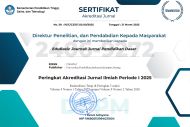Desain Didaktis Luas Daerah Segi Empat Sembarang Berbasis Model Pembelajaran SPADE
Abstract
Keywords
Full Text:
PDFReferences
Aprianti, D. A., Karlimah, K., & Hidayat, S. (2016). Desain didaktis pengelompokan bangun datar untuk mengembangkan komunikasi matematis siswa kelas II sekolah dasar. Pedadidaktika: Jurnal Ilmiah Mahasiswa Pendidikan Guru Sekolah Dasar, 3(1), 150-158.
Burhan, Y. (2010). Meningkatkan Kemampuan dalam Menghitung Luas Segi Empat Sembarang melalui Metode Demonstrasi di Sekolah Dasar. Skripsi. Tasikmalaya: Universitas Pendidikan Indonesia Kampus Tasikmalaya.
Cintang, N., & Meiza, A. N. (2017). Peningkatan pemahaman konsep bangun datar melalui pendekatan kontruktivisme berbasis teori van hiele. Jurnal Pendidikan Dasar Dan Pembelajaran, 7(1), 1-8. Retrieved from http://e-journal.unipma.ac.id
Hadi, S. (2005). Pendidikan Matematika Realistik Dan Impelentasinya. Banjarmasin: Tulip.
Jannah, U. R. (2013). Teori dienes dalam pembelajaran matematika. Jurnal Kependidikan Interaksi, 7(2), 126-131. Retrieved from https://ejournal.unira.ac.id
Nur'aeni, E. (2019). Pengembangan Model Pembelajaran Geometri Berbasis Permainan Tradisional Kampung Naga Untuk Siswa Sekolah Dasar. Laporan Penelitian Dana Dikti Tahun Ke-2. Bandung: Univeristas Pendidikan Indonesia
Nur'aeni, E., Nur, L., Muharram, M. R., & Dewi, F. N. (2018). Didactical design of cube nets based on pecle traditional games in primary school. Journal of Physics: Conference Series, 1318, 1-8. doi:10.1088/1742-6596
Nurdin, L., Nur'aeni, E., & Suryana, Y. (2014). Desain didaktis konsep luas daerah jajar genjang pada pembelajaran matematika kelas IV sekolah dasar. Pedadidaktika: Jurnal Ilmiah Mahasiswa Pendidikan Guru Sekolah Dasar, 1(1), 1-12.
Sulistiawati, Suryadi, D., & Fatimah, S. (2015). Desain didaktis penalaran matematis untuk mengatasi kesulitan belajar siswa SMP pada luas dan volume limas. Jurnal Matematika Kreatif dan Inovatif, 6(2), 135-146.
Suryadi, D. (2013). Didactical design research (DDR) dalam pengembangan pembelajaran matematika. Seminar Nasional Matematika Dan Pendidikan Matematika. Cimahi: STKIP Siliwangi.
Ulya, H., & Rahayu, R. (2017). Pembelajaran treffinger berbantuan permainan tradisional congklak untuk meningkatkan kemampuan komunikasi matematis. Jurnal Aksioma, 6(1), 48-55. Retrieved from https://repository.ummetro.ac.id
DOI: https://doi.org/10.17509/ebj.v2i1.26427
Refbacks
- There are currently no refbacks.
Copyright (c) 2020 Universitas Pendidikan Indonesia
This work is licensed under a Creative Commons Attribution 4.0 International License.
This journal is indexed by




.png)




.png)
1.png)


1.png)

.png)